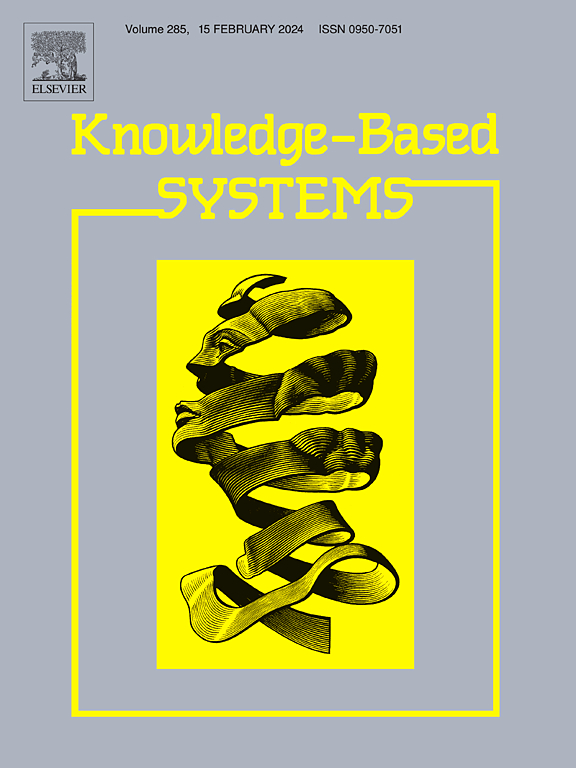KMANet: A spatio-temporal enhancement network for micro-action recognition
IF 7.6
1区 计算机科学
Q1 COMPUTER SCIENCE, ARTIFICIAL INTELLIGENCE
引用次数: 0
Abstract
Action recognition technology has gained widespread application due to its ability to capture and process fine-grained motion details. Recent research has increasingly focused on analyzing individual emotions and intentions, bringing greater attention to micro-action recognition (MAR), which involves subtle and low-intensity movements. However, MAR faces several challenges, such as subtle variations in motion amplitude and highly similar visual features. These factors limit the effectiveness of traditional action recognition methods in achieving high detection accuracy. To address these limitations, we drew inspiration from the MAR benchmark MANet and focused on temporal feature modeling and effectively discriminative regions of micro-actions. Accordingly, we propose a two-stage MAR framework with a collaborative mechanism, termed KMANet, which adopts a two-stage spatiotemporal feature enhancement strategy. Specifically, in the temporal dimension, we design a Key Frame Attention Mechanism (KFAM) to automatically focus on key-frame sequences of micro-actions and capture inter-frame dynamic relationships, thereby reducing the interference of non-essential frames. This approach effectively addresses the issue of insignificant motion amplitude changes. The integration of the Micro-Action Focus Module (MAFM) on top of KFAM serves to further enhance local spatial features and reinforce detailed representation in core motion regions. The integration of these two modules achieves a substantial improvement in recognition accuracy at a minor computational expense. Extensive experimentation on the MAR dataset MA-52 and BBSI demonstrates that, in comparison to state-of-the-art methods, KMANet fulfills the requirements of fine-grained scenario detection and attains superior recognition accuracy and performance in micro-action recognition tasks.
KMANet:用于微动作识别的时空增强网络
动作识别技术由于能够捕捉和处理细粒度的运动细节而得到了广泛的应用。最近的研究越来越关注个体情绪和意图的分析,越来越多地关注微动作识别(MAR),这是一种涉及细微和低强度动作的识别。然而,MAR面临着一些挑战,例如运动幅度的细微变化和高度相似的视觉特征。这些因素限制了传统动作识别方法在实现高检测精度方面的有效性。为了解决这些限制,我们从MAR基准的MANet中获得灵感,并专注于时间特征建模和有效区分微动作区域。在此基础上,本文提出了一种基于KMANet的两阶段MAR框架,该框架采用两阶段时空特征增强策略。具体而言,在时间维度上,我们设计了关键帧注意机制(KFAM),自动关注微动作的关键帧序列并捕捉帧间的动态关系,从而减少非必要帧的干扰。这种方法有效地解决了运动幅度变化不显著的问题。在KFAM之上集成微动作焦点模块(MAFM)有助于进一步增强局部空间特征,并加强核心运动区域的详细表现。这两个模块的集成以很小的计算成本实现了识别精度的大幅提高。在MAR数据集MA-52和BBSI上进行的大量实验表明,与最先进的方法相比,KMANet满足了细粒度场景检测的要求,并在微动作识别任务中获得了卓越的识别精度和性能。
本文章由计算机程序翻译,如有差异,请以英文原文为准。
求助全文
约1分钟内获得全文
求助全文
来源期刊

Knowledge-Based Systems
工程技术-计算机:人工智能
CiteScore
14.80
自引率
12.50%
发文量
1245
审稿时长
7.8 months
期刊介绍:
Knowledge-Based Systems, an international and interdisciplinary journal in artificial intelligence, publishes original, innovative, and creative research results in the field. It focuses on knowledge-based and other artificial intelligence techniques-based systems. The journal aims to support human prediction and decision-making through data science and computation techniques, provide a balanced coverage of theory and practical study, and encourage the development and implementation of knowledge-based intelligence models, methods, systems, and software tools. Applications in business, government, education, engineering, and healthcare are emphasized.
 求助内容:
求助内容: 应助结果提醒方式:
应助结果提醒方式:


